The 34 most awe-inspiring scientific achievements of 2020 include ancient mummy tombs, historic rocket launches, and the fastest vaccine in history
Morgan McFall-Johnsen,Aria Bendix,Aylin Woodward,Susie Neilson

- Astronomers, archaeologists, geneticists, and many other scientists made mind-boggling breakthroughs in 2020.
- Some highlights include work that uncovered stashes of mummies, launched the first-ever crewed commercial spaceflight, and produced COVID-19 vaccines in record time.
- These are 34 of the biggest scientific accomplishments of the year.
Scientists and researchers around the world pulled off impressive feats in 2020. They unearthed huge caches of ancient bones and sarcophagi, discovered new types of black holes, and found water that could host alien life in new places across the solar system.
That was all in the midst of a pandemic, which spurred its own branch of fast-moving science. Over the past year, coronavirus researchers have sequenced the pathogen's genome, lifted the veil on the nature of infection and immunity, and developed vaccines that are now being administered across the US.
The pandemic hardly slowed NASA and its spaceflight partners, though. They still found time to launch a new Mars rover, a record-breaking probe to the sun, and the first-ever commercial astronaut mission.
These and other accomplishments are improving scientists' understanding of the coronavirus, our planet, and the surrounding cosmos.
As a new year approaches, here's a look back at some of the most mind-boggling scientific discoveries and achievements of 2020.
Some archaeological findings this year date back to the Mesozoic era. Paleontologists discovered that early dinosaurs laid leathery, soft-shelled eggs, like snakes and turtles do.
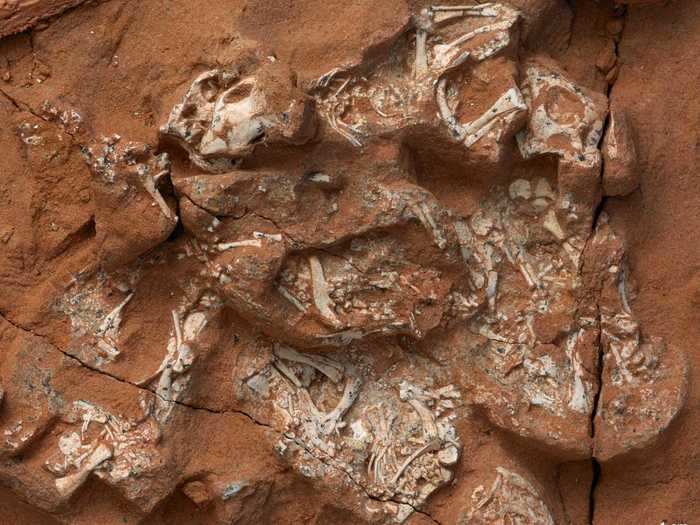
Previously discovered dinosaur eggs were all hard-shelled. But fossilized eggs from two dino species in the Gobi Desert had soft shells, a June study revealed.
"I've been excavating in Mongolia for 20 years now, and we find a lot of dinosaur eggs. But these clutches tell us something very different from what we knew before," Mark Norell, the lead author of the study and a paleontologist at the American Museum of Natural History, previously told Business Insider.
Of the more than a dozen eggs Norell's team found, some came from Protoceratops, a 75-million-year-old, sheep-sized herbivore. The rest belonged to Mussaurus, a 20-foot, long-necked herbivore that lived at least 200 million years ago. The finding suggests hard-shelled eggs — an advantageous evolutionary milestone that allowed the animals to flourish — cropped up much later in the dinosaur fossil record than scientists previously thought.
Millions of years later, during the last Ice Age, early humans migrated from Asia to the Americas by crossing the sea in boats. They didn't walk across a land bridge, as previously thought.
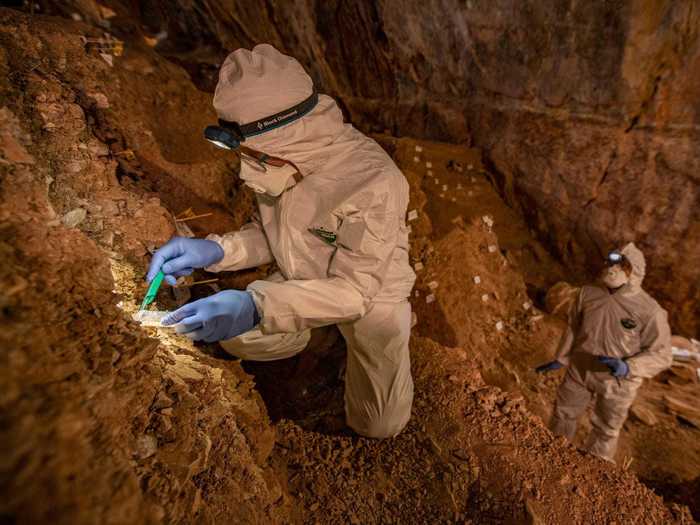
Archaeologists determined that stone tools and artifacts discovered in a remote cave in Zacatecas, Mexico, were about 32,000 years old. They described the finding in a July study.
That new evidence upended the idea that the first people arrived in North America after continent-hopping from modern-day Siberia via the Bering land bridge between 18,000 and 13,000 years ago.
During the last Ice Age 32,000 years ago, that land bridge was impassable. So the research suggests the first Americans arrived by sea. According to the study authors, these migrants were likely anatomically modern humans.
After humans reached the Americas, they may have hunted mammoths to extinction, as evidenced by the largest stash of mammoth bones ever discovered.
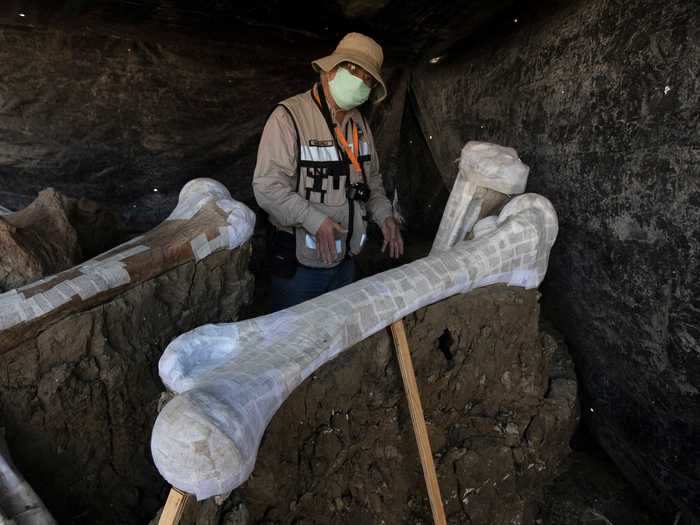
Archaeologists discovered over 200 ancient mammoth skeletons beneath the construction site of an airport north of Mexico City.
The mammoths were found stuck in a lakebed. Two explanations are possible: Either they were drawn to the lake naturally to eat the grasses on its shores, or humans chased them into the mud. If it was the latter, that would mean humans were capable of killing larger numbers of mammoths than previously thought.
Another prehistoric creature, a cave bear, was discovered remarkably well-preserved in the Siberian permafrost.
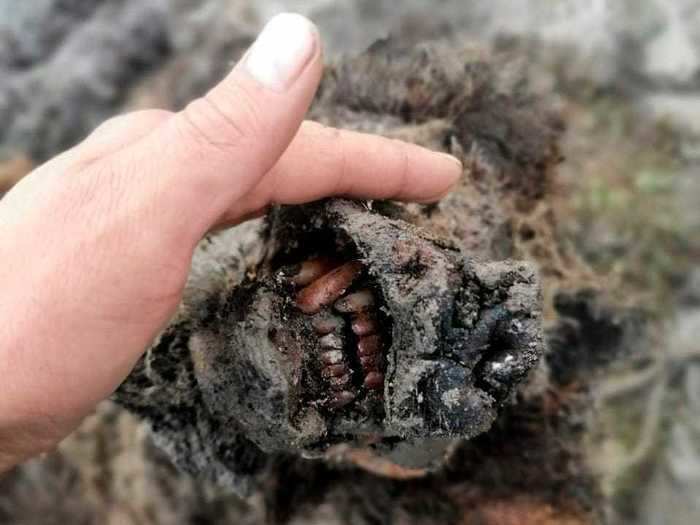
The adult cave bear carcass was found perfectly preserved on a remote Siberian island — with its nose, teeth, and internal organs still intact.
"This is the first and only find of its kind — a whole bear carcass with soft tissues," Lena Grigorieva, a researcher at North-Eastern Federal University in Yakutsk, Russia, said in a September press release.
Scientists think the cave bear died 22,000 to 39,500 years ago. Its species, Ursus spelaeus, lived during the last Ice Age and went extinct 15,000 years ago.
In England, archaeologists revealed that they'd determined the origin of some of the boulders that make up Stonehenge.

Stonehenge, which is estimated to be about 5,000 years old, consists of two distinct types of stone slabs set in half circles.
Researchers traced one type, the smaller bluestones, to a site in Wales 150 miles away. Research from July suggests the 30-foot (9-meter) sandstone boulders, called sarsens, that constitute the rest of the monument came from a nearby woodland area.
Still, Stonehenge's builders had to drag the 50,000-pound (22,700-kilogram) sarsens about 15 miles —"which is insane really if you think about it," archaeologist David Nash, the lead author of the study, previously told Business Insider.
Egyptologists unearthed batch after batch of sarcophagi in an ancient city of the dead beneath Saqqara.
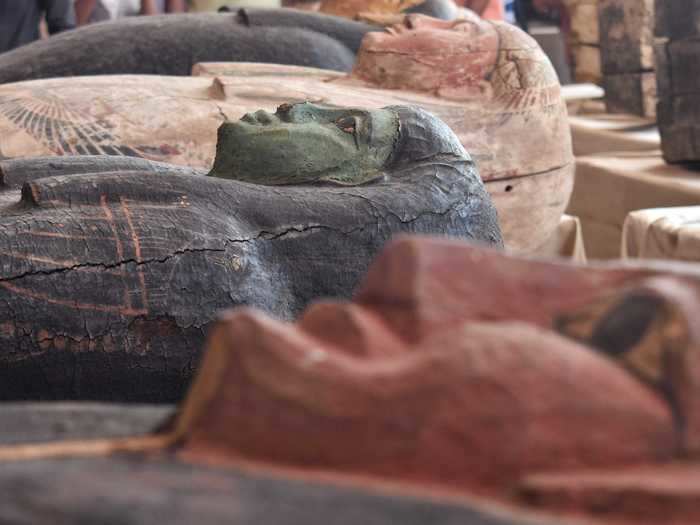
More than 160 mummies have been found so far. They'd been buried for 2,500 years — until the first cache of 13 was found at the bottom of a 36-foot-deep shaft in September. Researchers have also found various artifacts in the tombs they've excavated, as well as a trove of animal mummies.
Further discoveries from the site are expected in the coming months.
While some pieces of history were found, others were lost. New evidence showed two key Antarctic glaciers, Pine Island and Thwaites, are rapidly collapsing.
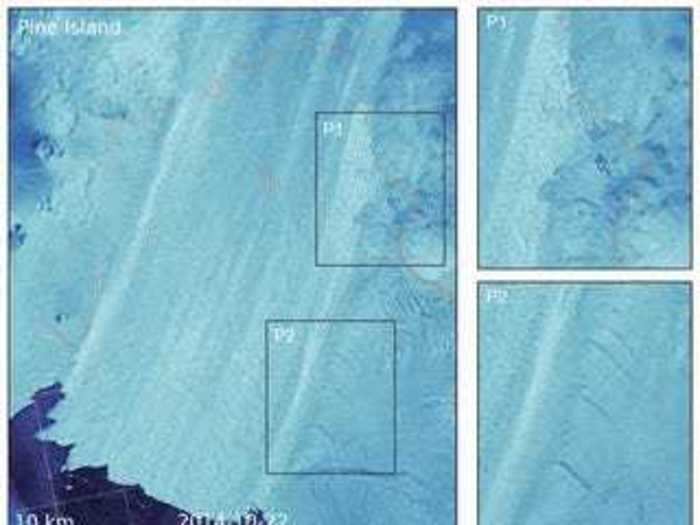
The enormous glaciers on the side of West Antarctica already contribute 5% of overall sea-level rise. But a September study of satellite images found that a natural buffer system that keeps the glaciers from flowing outward is breaking down more quickly than previously understood.
The Thwaites, in particular, is known as "the Doomsday Glacier" because it protects other glaciers from the warming sea. When it collapses, neighboring ice masses in western Antarctica will likely go down with it. Eventually, that process could raise sea levels by nearly 10 feet, permanently submerging many coastal areas including parts of New York City, Miami, and the Netherlands.
To address a different ecological crisis, scientists engineered plastic-eating "super-enzymes" that can break down bottles in days.
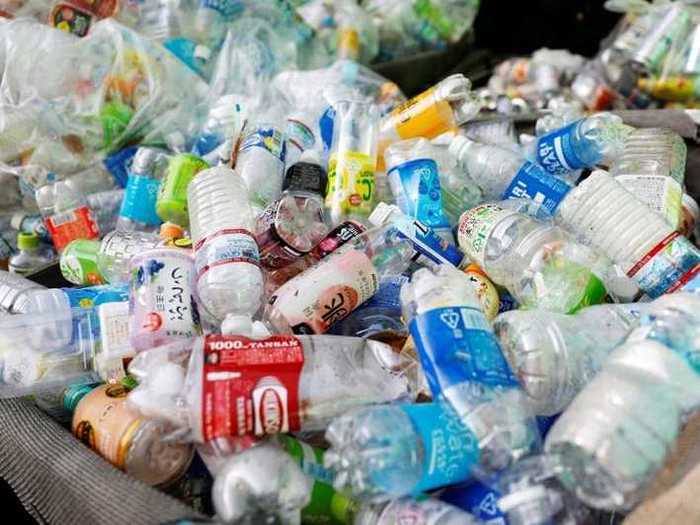
The new solution comes from researchers at the Center for Enzyme Innovation in the UK and the National Renewable Energy Laboratory in Colorado. The enzymes break down a common type of plastic called polyethylene terephthalate (PET) — used in single-use bottles as well as clothing and carpets — into its chemical building blocks.
Used at scale, the enzymes could cut into the staggering 300 million tons of new plastic that humans create each year, allowing manufacturers to reuse the same plastics over and over. In turn, they could reduce our reliance on fossil fuels, which are needed to produce new plastic.
Reaching beyond Earth, SpaceX launched the world's first crewed commercial spaceflight, rocketing two NASA astronauts to orbit aboard a Crew Dragon spaceship.
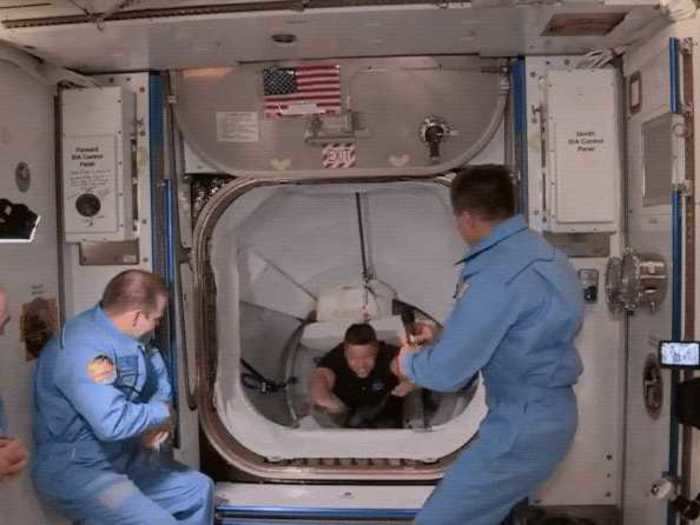
The mission was a test to prove SpaceX's human-spaceflight abilities. The Crew Dragon capsule carried Bob Behnken and Doug Hurley to Earth's orbit and docked to the International Space Station.
After two months of living and working on the football-field-sized space laboratory, Behnken and Hurley climbed back into the spaceship and fell back to Earth, parachuting safely into the Gulf of Mexico.
The mission's success was the fruit of a decade-long effort from NASA and its commercial partners to restore the US's ability to launch its own astronauts into space.
SpaceX, which was founded by Elon Musk, did it again on November 15 - this time launching four astronauts on a fully certified human launch system.
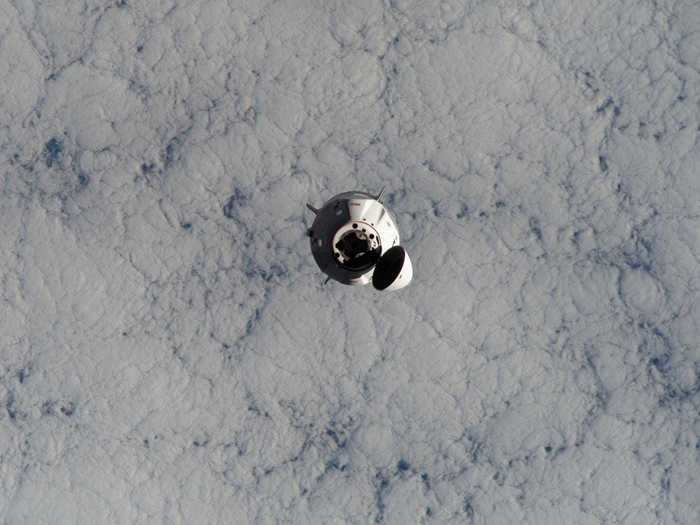
It was the company's first official crew transport for NASA. The week before the launch, the agency concluded its reviews of SpaceX's rocket, spaceship, and operations and officially certified the system for human spaceflight.
Then a Falcon 9 rocket launched a new Crew Dragon capsule to orbit with astronauts Mike Hopkins, Victor Glover, and Shannon Walker of NASA, as well as Soichi Noguchi of the Japanese space agency (JAXA). They're set to stay on the ISS for about six months. The mission is the first of six round-trip, fully crewed flights that NASA has contracted from SpaceX.
SpaceX also grew its Starlink satellite constellation and began testing the resulting internet service across the US.
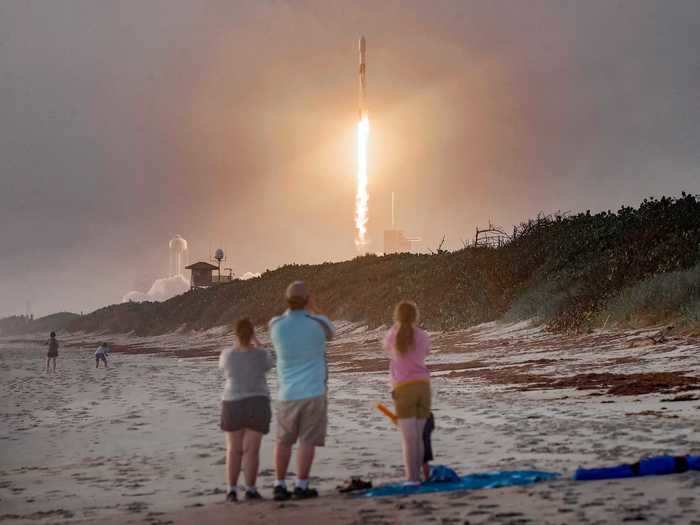
The initiative seems to be successfully advancing Musk's plan to blanket Earth in high-speed, satellite-provided internet.
SpaceX launched a beta program to test an early version of the Starlink internet service this year. The first batches of users reported that the constellation, now composed of nearly 900 satellites and counting, provides broadband-like performance in rural America.
An unprecedented launch rate made this possible: SpaceX rocketed 14 batches of 60 satellites into space this year.
But the ambitious, high-speed plan isn't without collateral damage. Starlink poses a threat to astronomy, since the shining satellites can mar telescope observations and block out celestial objects. The latest satellites sport sun visors to make them less bright in the night sky, but astronomer Jonathan McDowell told Business Insider that they were still bright enough to appear in telescope observations.
NASA and the European Space Agency launched the Solar Orbiter in February, and it beamed back the closest images ever taken of the sun.
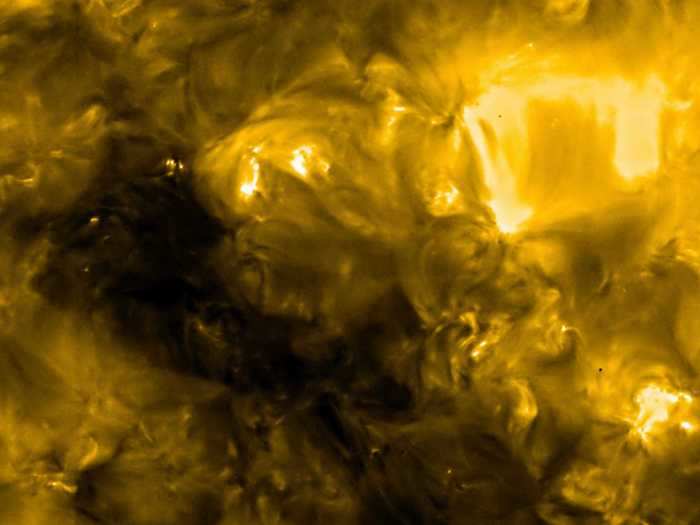
After launching on February 9, the Solar Orbiter traveled millions of miles to make its first close approach to the sun in June. It then beamed back the closest images ever taken of our star, revealing miniature solar flares burning across the sun's surface.
These "campfires," as the scientists behind the spacecraft called them, could explain why the sun's outer atmosphere is so much hotter than its inner layers.
In its seven-year mission, the orbiter is expected to come within a scorching 26 million miles (42 million kilometers) of the sun, capture the first images of its poles, and probe its violent eruptions. This mission could help scientists better understand the solar wind — a stream of charged particles from the sun that washes over our planet — and predict dangerous solar flares.
Meanwhile, NASA's InSight lander on Mars detected hundreds of quakes. They revealed that the planet has a moon-like interior.
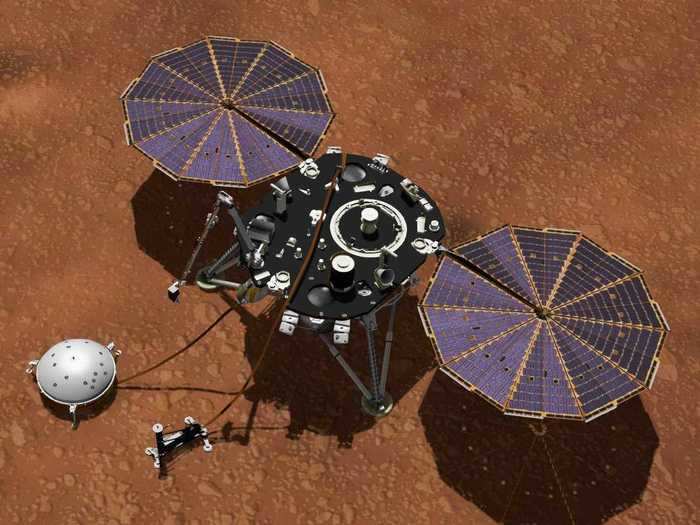
When the InSight team released its findings in February, the lander had registered about 450 Mars quakes in total. Researchers were surprised to find that seismic waves on Mars reverberate through in a pattern similar to quakes on Earth's moon. That suggests the red planet's crust is more dry and broken up than scientists anticipated — probably because of asteroid impacts.
The lander also detected about 10,000 whirlwinds, like dust devils, swirling across the Martian surface and bending the ground beneath them.
To learn more about Mars, NASA launched a new rover called Perseverance in July. It carries an oxygen synthesizer and the first interplanetary drone.
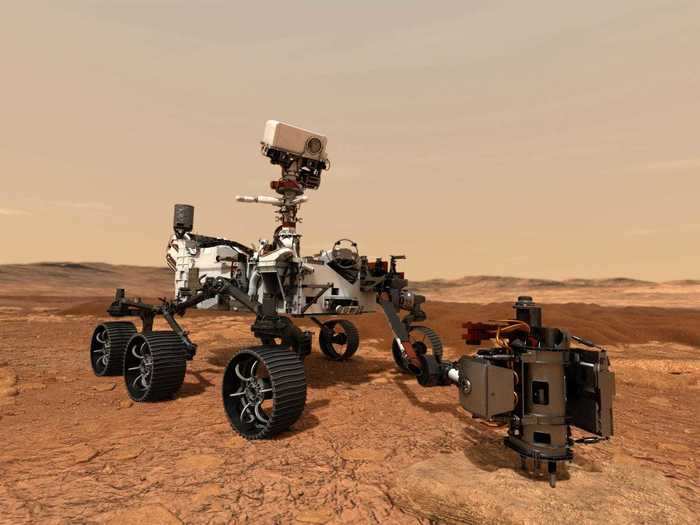
The $2.4 billion, SUV-sized rover launched on July 30. It's still en route to Mars, where it's expected to attempt a daunting, seven-minute landing on February 18.
If the landing succeeds, the rover will then begin to scan and drill Martian soil for signs of alien life. It will stash samples of the red dust for a later mission to bring back to Earth.
Perseverance will also release the first interplanetary drone from its belly and test technologies that humans would need to survive on the red planet. That includes a robot that can produce oxygen from carbon dioxide in the Martian atmosphere, much like a tree would on Earth.
China and the United Arab Emirates launched Mars missions, too, which seek to map the planet's climate and locate underground water.
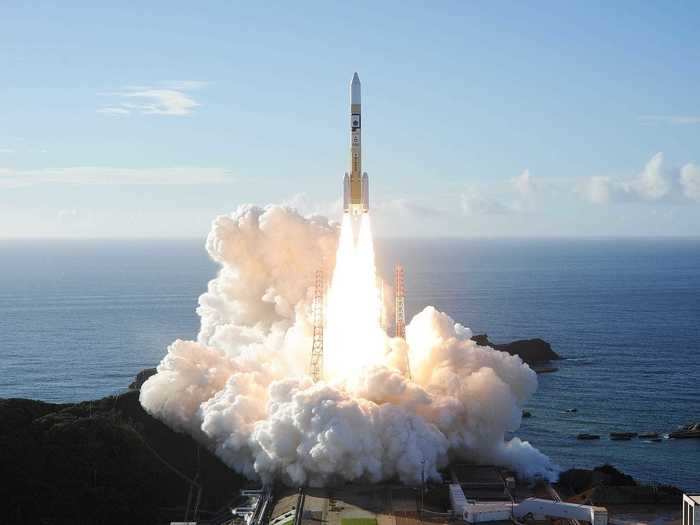
Like the Perseverance rover, these missions launched in July to align with the time when Mars gets closest to Earth.
The UAE's Hope Probe is the first spacecraft from the Arab world to journey to another planet. When it arrives in February, Hope should enter a large, oval-shaped path around Mars that allows it to observe most of the planet in each of its 55-hour orbits. The orbiter is set to create the first global map of the planet's climate over one Martian year.
China's Mars rover, Tianwen-1, is equipped with a radar system that can detect underground pockets of water. It aims to sniff out ancient reservoirs that could harbor life. If successful, it will be the first Mars mission to drop a landing platform, deploy a rover, and send a spacecraft into the planet's orbit all at once.
A NASA probe high-fived the surface of an asteroid, landing just long enough to collect a whopping 2-pound sample to bring back to Earth.
The mission, called Osiris-Rex, launched in 2016 and reached asteroid Bennu in 2018. The spacecraft spent the last two years orbiting the space rock, collecting data, and preparing to scoop samples from its boulder-field surface.
The probe finally accomplished that task on October 20, lowering itself to Bennu and swirling up a whirlwind of dust and rocks. So much material landed in the probe's collection device that it was leaking into space for a few days. NASA managed to secure 2 pounds of the stuff, and the spacecraft is set to bring it back to Earth in 2023.
The samples could reveal new secrets about the beginnings of our solar system, hint at the origins of life on Earth, and help NASA prepare for future efforts to mine resources from asteroids.
Japan, meanwhile, returned its own asteroid loot to Earth this year. It's the world's first sample of material from below the surface of a space rock.
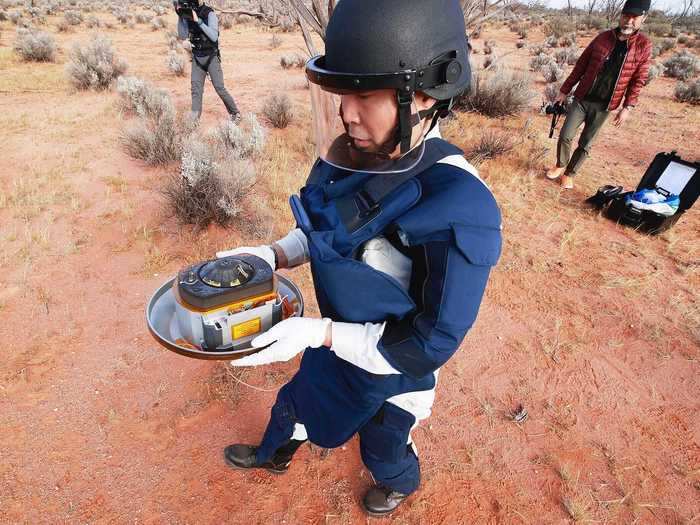
JAXA's Hayabusa-2 mission visited asteroid Ryugu: a primitive, half-mile-wide rock that zips through our solar system up to 131 million miles (211 million kilometers) from the sun.
The probe landed on Ryugu in February to collect shallow samples from the asteroid's surface. Two months later, it went a step further by blasting a 33-foot crater into Ryugu using a copper plate and a box of explosives. That loosened rocks and exposed material below the surface. In July 2019, Hayabusa-2 lowered itself once again and scooped up the debris.
The spacecraft dropped the asteroid sample into the Australian outback on December 6.
It's world's first sample of material from below an asteroid's surface. Scientists believe this rock could be as old as our solar system, and it could reveal new clues about the origins of life of Earth.
Researchers also investigated material from a meteor that fell to Australia on its own. Inside, they found ancient stardust - the oldest solid material ever discovered on Earth.
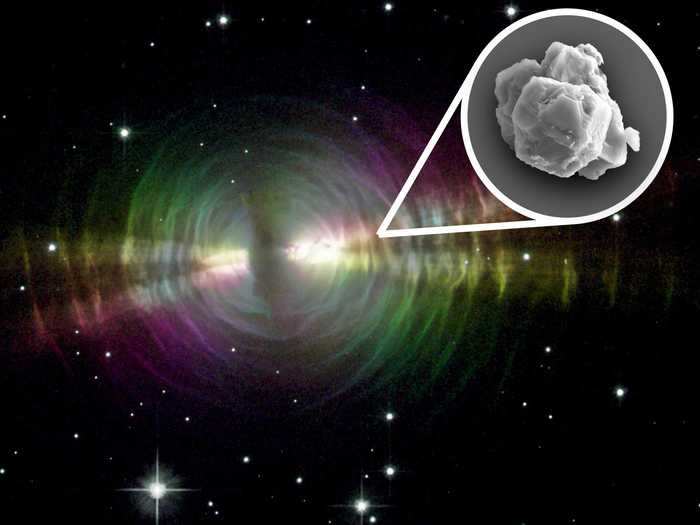
In a January study, scientists analyzed meteorite fragments found in Australia and learned that they contained bits of stardust between 5 and 7 billion years old. That's older than our sun, which is about 4.6 billion years old.
That means this stardust is the oldest material ever found on Earth. It beats our planet's oldest rocks, which were previously considered the most ancient material: zircon crystals discovered in Australia in 2014. Those are only 4.4 billion years old.
Since the majority of the grains studied were from the same time period, they bolster a longstanding theory: that instead of forming gradually over time, most of the stars in our galaxy formed in an accelerated burst about 7 billion years ago.
Gravitational-wave detectors revealed a new class of collision in deep space, as well as the existence of a black hole that physicists thought could never exist.
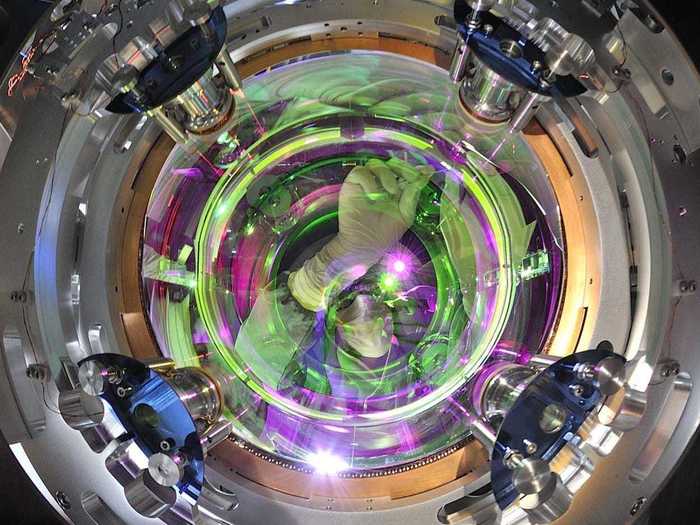
Two huge experiments in Washington and Louisiana — together known as the Laser Interferometer Gravitational-Wave Observatory (LIGO) — and their Italian counterpart, Virgo, detected a record of 39 new gravitational-wave events in their most recent six-month observing period.
That's 39 times that a meeting of two massive objects somewhere in the cosmos sent out powerful ripples in space-time.
In January, LIGO researchers revealed that the devices had sensed ripples from the collision of two neutron stars — the super-dense remnants of dead stars. This was not unusual, but unlike previously discovered neutron-star mergers, these appeared to immediately collapse into a black hole, leaving nothing behind.
Then in September, physicists announced that LIGO and Virgo had pointed them to a new type of black hole in the "forbidden zone" — a range of black-hole sizes that some physicists thought could never form.
Back on the ISS, astronauts forged a fifth state of matter.
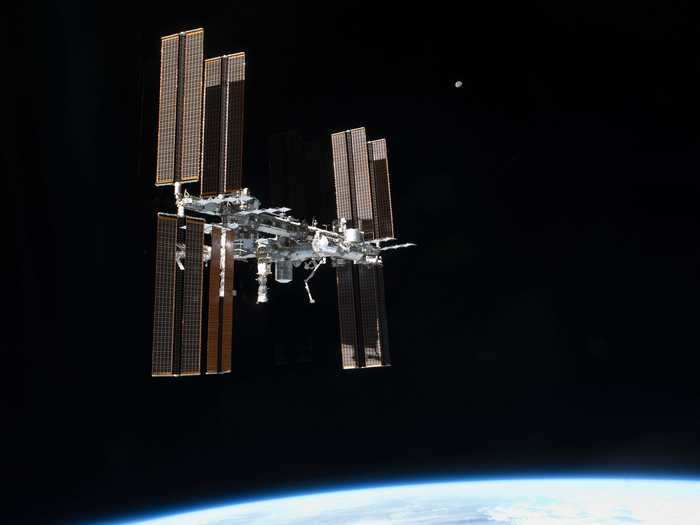
The matter, called Bose-Einstein condensates or BECs, consists of a few million atoms that have been chilled to temperatures even lower than in interstellar space. Atoms blob together at such low temperatures, making it easier for researchers to study the quantum world: a subatomic realm in which everything is smaller than a single atom.
While BECs have been made on Earth for 25 years, gravity makes them difficult to study; it yanks them to the ground, making them disappear within fractions of a second.
But in June, a study revealed that the Cold Atom Lab on the ISS had successfully created BECs in microgravity. That gives researchers opportunities to examine the ultracool matter for longer periods of time than on Earth, potentially helping them study gravitational waves and dark energy.
The search for alien life got a boost when scientists discovered hints of phosphine - a gas produced by anaerobic microbes on Earth - in the atmosphere of Venus.
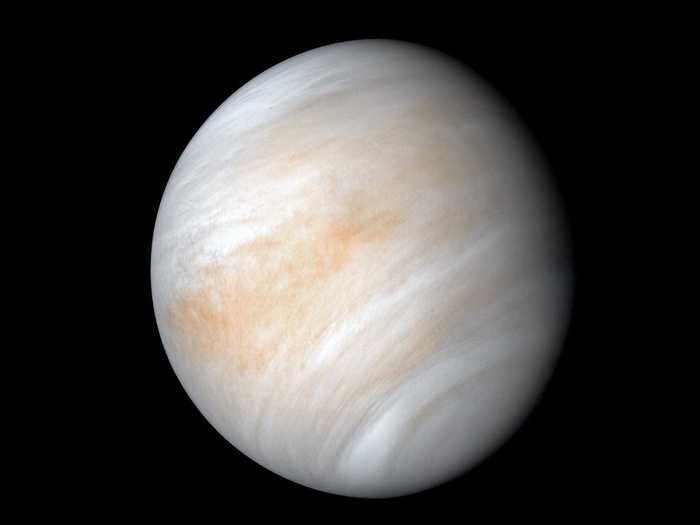
Phosphine could come from volcanic activity or lightning strikes — but not this much of it. So the September finding was a hint about potential alien life.
But the study was met with scrutiny. Three other research teams failed to confirm the findings, even though two of them used the same data.
The astronomers behind the discovery then reanalyzed their data and found a processing error. The signal for phosphine was still there, but it was fainter. Levels of the gas were about one-seventh what the scientists originally estimated. They relabeled their discovery as "tentative."
Still, even this smaller amount of phosphine can't be explained by volcanoes and lightning alone, according to Nature. It's possible that mysterious chemical reactions in Venus's atmosphere turn phosphorous compounds from eruptions and lightning storms into phosphine. And there is still a chance that it could be alien bacteria.
The search for alien intelligence, however, took a blow after astronomers traced a fast radio burst back to a dead star, not an alien civilization.
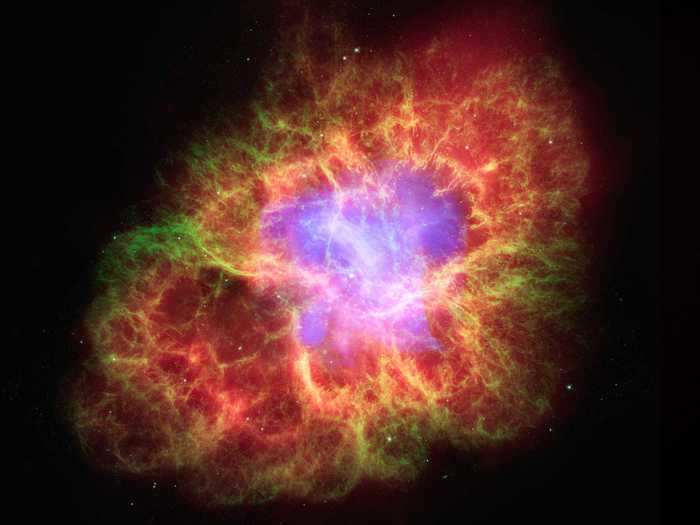
Telescope data first unearthed these mysterious signals in 2007. Researchers then determined that a new fast radio burst was probably booming across the cosmos every second. Some seemed to be repeating, with explosions of radio waves coming from the same location at regular intervals.
Some scientists speculated that alien societies could be beaming these radio blips to our galaxy.
In April, two sets of researchers separately detected the first such signal from within the Milky Way. It was pinned to an explosion of activity on a magnetar, a distant neutron star with a powerful magnetic field. The finding indicated that many of these radio pulses, if not all, probably come from magnetars.
Other evidence gave the search for alien life new momentum, though. Scientists discovered salt water on two nearby worlds: Mars and a dwarf planet called Ceres.
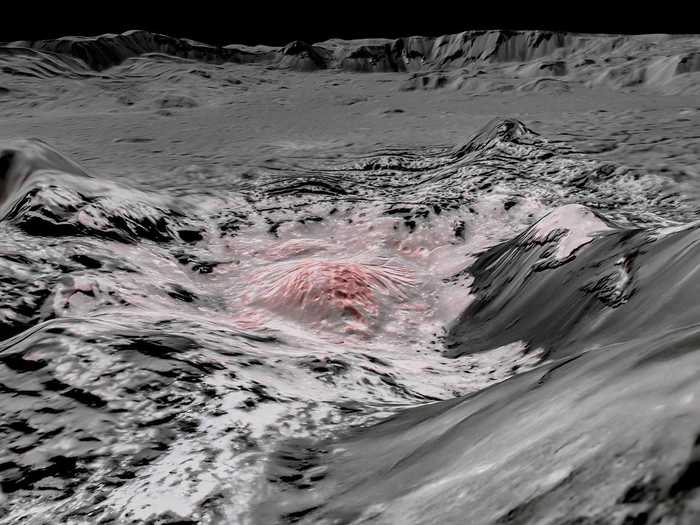
Until August, scientists couldn't explain the patches of salty crust that NASA's Dawn spacecraft spotted on Ceres. The dwarf planet orbits between Mars and Jupiter. But research revealed that saltwater had probably percolated up to the dwarf planet's surface from an underground ocean about 25 miles deep and hundreds of miles wide.
Mars — already a contender for ancient life — has saltwater lakes beneath the glaciers of its southern ice cap, a team of scientists found in September.
On both Mars and Ceres, these hidden reservoirs could house primitive life.
Even the moon revealed new reserves of water this year.
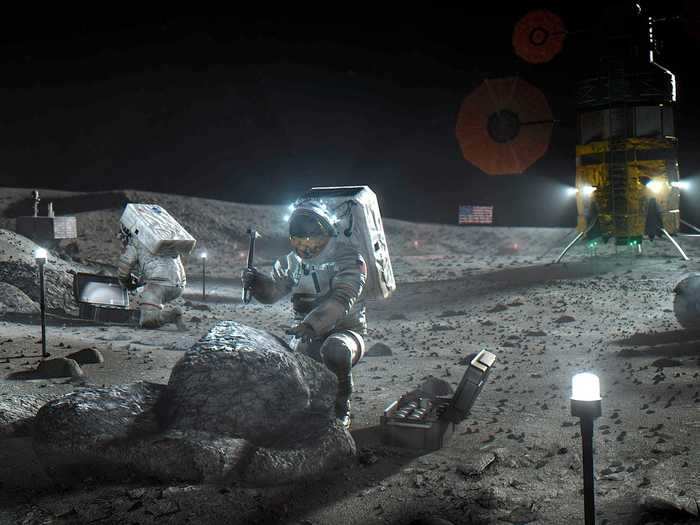
In October, NASA scientists announced the discovery of H2O on the moon's surface. Astronomers have been picking up signs of lunar water for decades, but there was always the possibility that it was not water as we know it (H2O) but a compound called hydroxyl.
Researchers tend to describe both compounds as "water," but the oxygen and hydrogen molecules that make up hydroxyl form a much stronger chemical bond than those in H2O. That makes hydroxyl more difficult to break down, a process future astronauts might employ to produce oxygen for breathing and hydrogen to make rocket fuel.
Accessible H2O could be key for NASA's ambitions to build a permanent base on the moon and springboard astronauts to Mars from there. The moon could one day serve as a gas station for deep-space explorers.
Other researchers also found small, permanent shadows where water ice could survive on the moon, littered across its surface. These "cold traps" could be easy sites for future lunar water mining.
In December, the moon got a new visitor: China's Chang'e-5 lander, which aims to bring moon rocks to Earth for the first time in over 40 years.
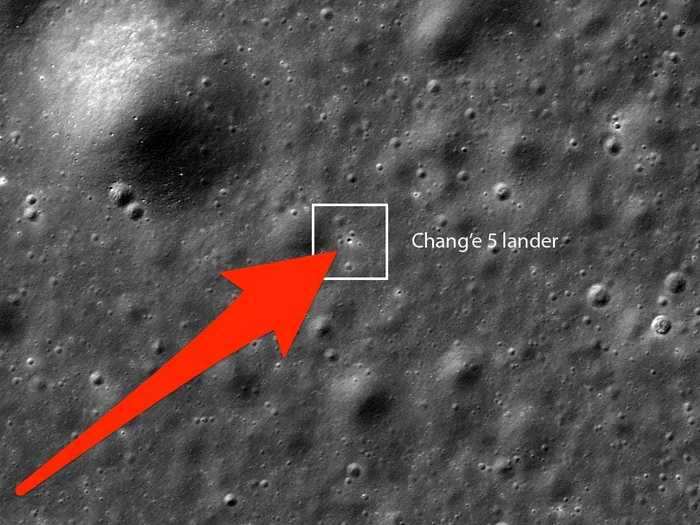
The Chang'e 5 mission aims to get a sample of the lunar surface back to Earth before the end of 2020. If successful, it will be the first time a country has brought home moon rock in more than 40 years.
"This is a really audacious mission," David Draper, the deputy chief scientist at NASA, told the New York Times. "They're going to move the ball down the field in a big way with respect to understanding a lot of things that are important about lunar history."
The region the robot took samples from is thought to be 1.2 billion years old, nearly 2 billion years younger than any lunar region humans have sampled before. So studying the samples on Earth could improve scientists' understanding of the ages of younger lunar regions and the moon's history of volcanic activity.
Back on Earth, the coronavirus pandemic ushered in a flood of new discoveries. Researchers sequenced the virus' genome just three days after learning about the mysterious illness.
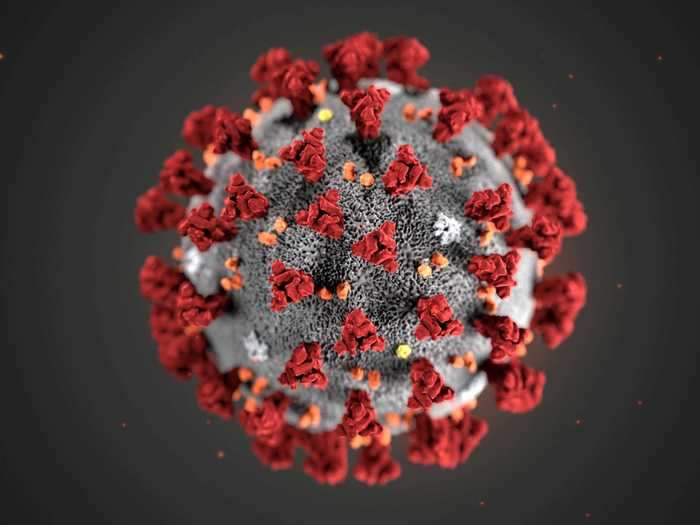
The Wuhan Institute of Virology, part of the Chinese Academy of Sciences, decoded the virus' full genetic sequence on January 2, though it took another 10 days for Chinese labs to publish the genome on GISAID, a scientific platform.
The scientists found that the novel coronavirus, SARS-CoV-2, shares about 80% of its genome with the coronavirus that causes SARS. That gave scientists a clue the virus had jumped from animals to humans.
Then in May, a study revealed an even closer genetic match — more than 97% —between SARS-CoV-2 and a coronavirus called RmYN02 that circulates in Chinese bats. The study offered further evidence that the virus jumped naturally from bats to an intermediary species before making its way into our population.
The virus was probably spreading across the globe as early as December.
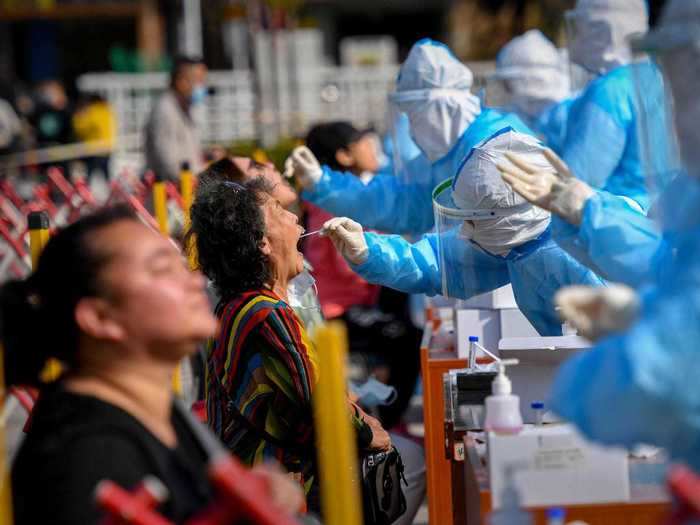
Government records show that China's first coronavirus case may have appeared as early as November 17, 2019. But some research has hinted that the virus was spreading even earlier: A study from Milan's National Cancer Institute found that four of Italy's coronavirus cases dated back to the first week of October.
At the very least, researchers have determined, the virus was likely spreading across the globe in December 2019. Blood samples from the American Red Cross showed that some people in the US had coronavirus antibodies as early as December 13.
In February, Chinese researchers found evidence that people could transmit the virus while asymptomatic.

In February, a hospital in Anyang, China, identified a 20-year-old woman from Wuhan who passed the virus to five family members but never got physically sick herself. A January report from the Chinese Center for Disease Control and Prevention had also said that people could transit the virus while presymptomatic (before symptoms started).
But it took a while for the scientific community to acknowledge these modes of transmission. As late as June, a World Health Organization official said asymptomatic spread was "very rare." The agency later clarified that it didn't know how frequently asymptomatic people could pass the virus to others.
Scientists now suspect that at least one in five infected people are asymptomatic — and that these people transmit the virus, though less frequently than those with symptoms. Scientists have also found that people can be highly contagious one to two days before their symptoms start.
Scientists quickly learned that crowded indoor environments were ripe for superspreader events.

By the spring, researchers were beginning to understand and acknowledge that the coronavirus can spread via aerosols: tiny airborne particles produced when people talk or exhale. That meant crowded, indoor areas with poor ventilation — including bars, schools, and offices — were high-risk settings.
Indeed, researchers have linked a number of superspreader events — in which one person disproportionately infects a large group of others — to jails, bars, indoor weddings, and choir practices.
A May study from The University of Hong Kong, which has yet to be peer-reviewed, found that around 80% of transmission in Hong Kong from January to April came from just 20% of cases, suggesting superspreading was the primary means of transmission. The largest cluster of cases during that time was linked to bars.
By April, scientists had widely acknowledged that face masks could save lives.
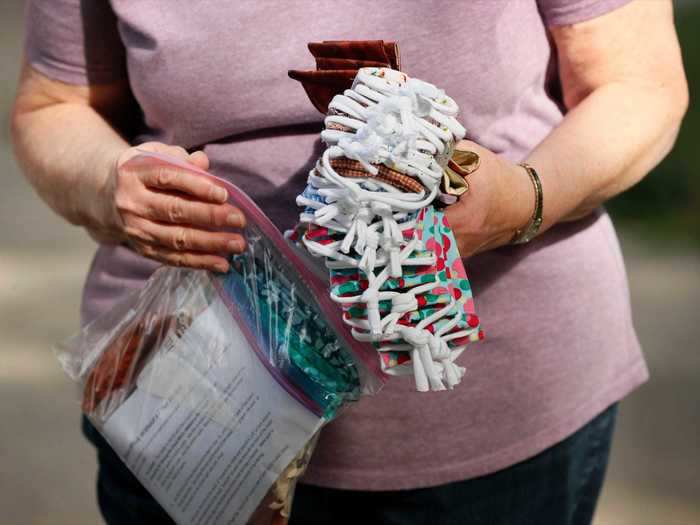
At the start of the pandemic, the US Centers for Disease Control and Prevention did not recommend the use of face masks for the general public. Other public-health experts also advised that the practice was unnecessary outside China given known transmission rates at the time.
The recommendations were delivered at a time when the risk of infection in the US seemed low — and scientists hadn't yet learned about asymptomatic or presymptomatic transmission.
But once new data emerged, the CDC began recommending face coverings in public settings on April 3. Since then, a slew of research has shown that masks help prevent transmission and lower mortality.
A model from the University of Washington's Institute for Health Metrics and Evaluation now estimates that 66,000 US lives could be saved from now through April 1 if 95% of the population were to wear masks.
Scientists have also discovered that COVID-19 may be a vascular disease, which explains why some patients experience blood clots and stroke.
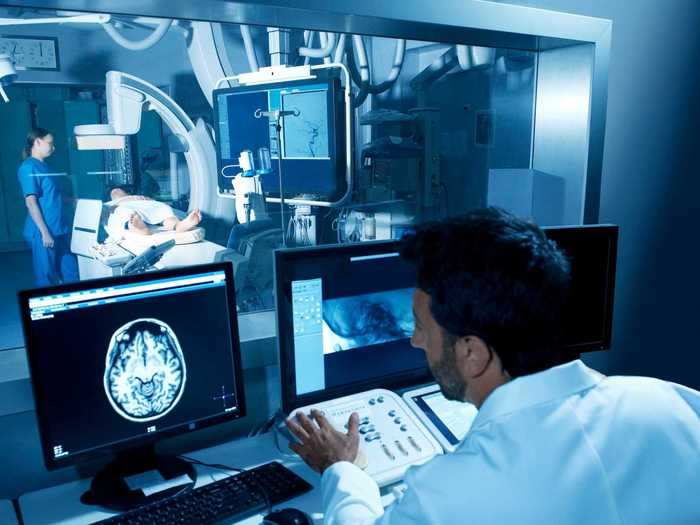
A July study in the New England Journal of Medicine suggested that COVID-19 may be a vascular disease instead of a respiratory one, meaning it can travel through the blood vessels. Research has shown that COVID-19 can lead to blood clots, leaky capillaries, and inflamed blood vessels — which is why some patients may experience heart damage or stroke.
An early clue about this came from doctors at Mount Sinai Hospital in New York City. Before the pandemic, they saw fewer than one patient under 50 with a large-vessel stroke over the course of two weeks, on average. But from March 23 and April 7, they saw five patients who fit that description. All tested positive for COVID-19.
More coronavirus-related strokes have been documented in severe cases than in mild ones, but younger patients with less serious cases can suffer from them as well. Dr. Nate Favini, who treats coronavirus patients in San Francisco, said he suspects some patients may experience "micro-strokes" without realizing it.
"The virus can create a propensity to clotting," Favini previously told Business Insider. "My suspicion is that's what's behind the strokes that we're seeing."
Evolving research suggests that people with COVID-19 may have immunity that lasts anywhere from several months to several years.

Scientists are still trying to figure out how long immunity to the virus lasts.
A new study that's awaiting peer review found that recovered coronavirus patients likely have a robust immune memory that persists for at least eight months. This memory relies on white blood cells known as T cells and B cells that have impressive powers of recollection. Combined, these layers of protection enable the immune system to recognize and re-attack the coronavirus should it ever invade again, thereby preventing another infection.
Coronavirus antibodies, on the other hand, appear to fade within a few months. Research from Spain has suggested an even shorter antibody lifespan among some patients: three to five weeks.
Coronavirus vaccines got designed at lightning speed.

Before the pandemic, the fastest vaccine ever developed, for mumps, took more than four years.
But as early as January, scientists set to work on coronavirus vaccines. Less than a year later, the vaccine developed by BioNTech and Pfizer has been authorized and is being distributed. Another from Moderna is on the brink of widespread authorization and use.
Each of those vaccines was designed over just two days. That breakneck pace wouldn't have been possible without a new form of vaccine technology: messenger RNA (mRNA) vaccines. These vaccines can be designed on computers using only a segment of the virus' genetic sequence.
"What you could probably do is make this a whole new way of making drugs, vaccines, almost anything," Bob Langer, one of Moderna's founders, previously told Business Insider.
Some new treatments have also shown promise among mild, moderate, and severe cases.
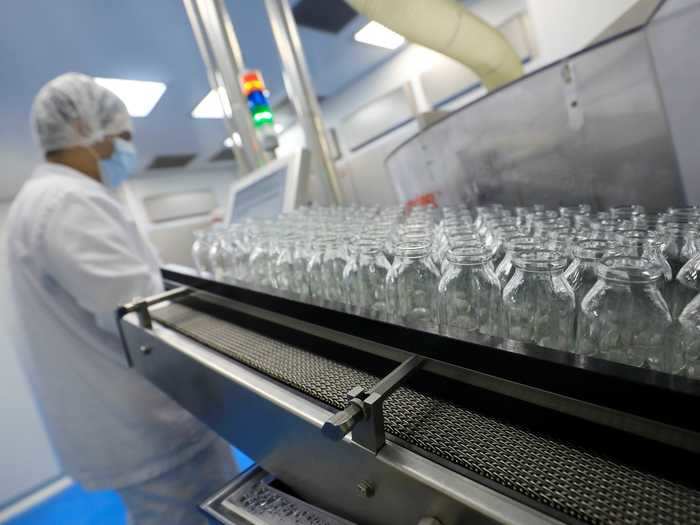
The US Food and Drug Administration has approved one coronavirus treatment so far: the antiviral drug remdesivir. Although some studies show it can shorten hospital stays for seriously ill patients, it doesn't appear to reduce the incidence of death. It's also expensive, at $2,340 for a standard course.
But the FDA has granted emergency authorization to a handful of other coronavirus treatments, including convalescent plasma and corticosteroids.
For severely ill patients, only steroids have been found to definitively reduce death rates.
For less serious COVID-19 cases, therapies that rely on monoclonal antibodies show some promise. These use synthetically manufactured antibodies similar to those produced naturally by the human immune system. The most recent drug to get FDA authorization, the monoclonal antibody therapy bamlanivimab, targets the coronavirus' spike protein to block its entry into cells.
READ MORE ARTICLES ON
Popular Right Now
Popular Keywords
Advertisement